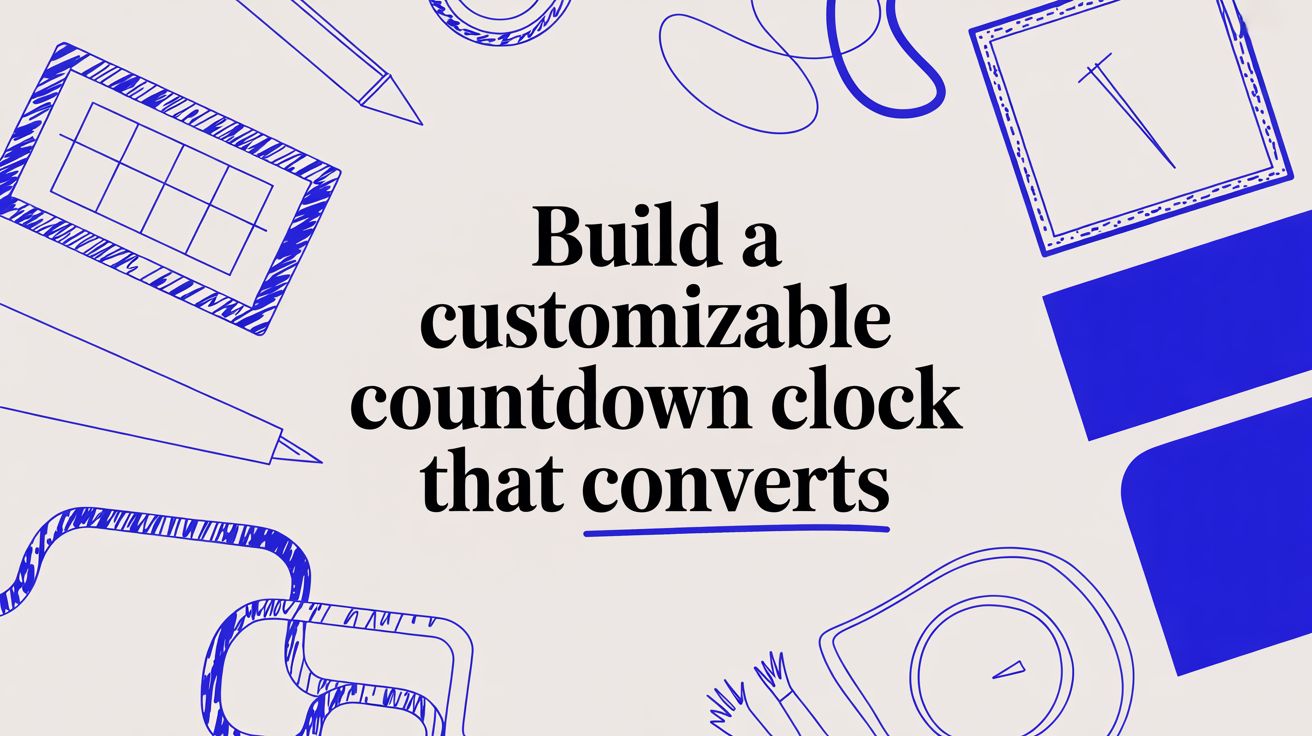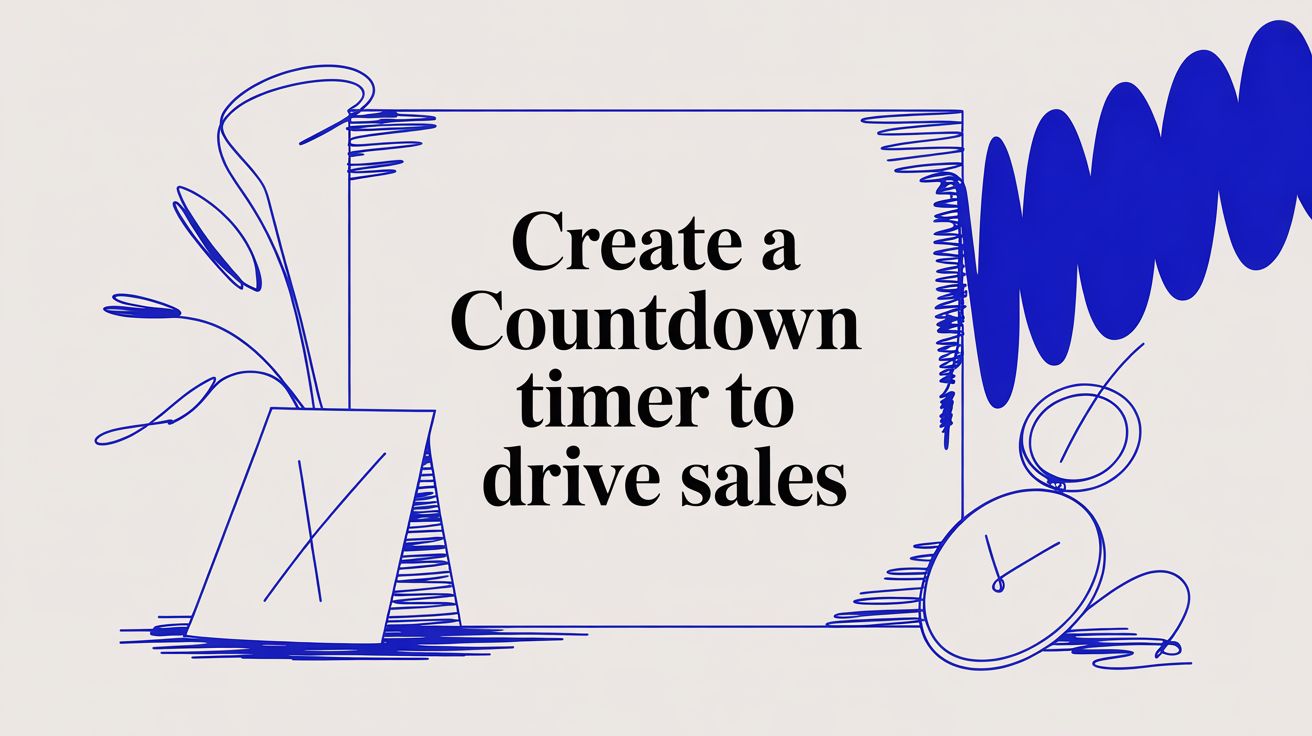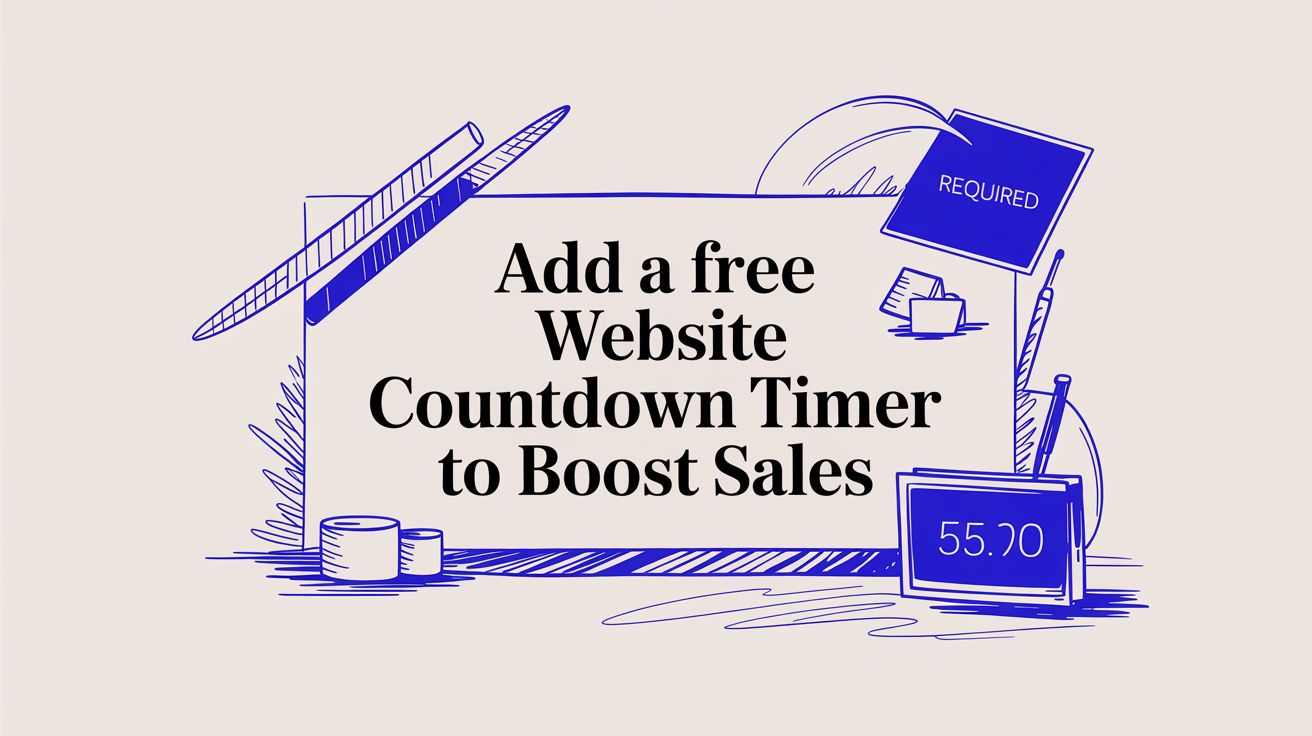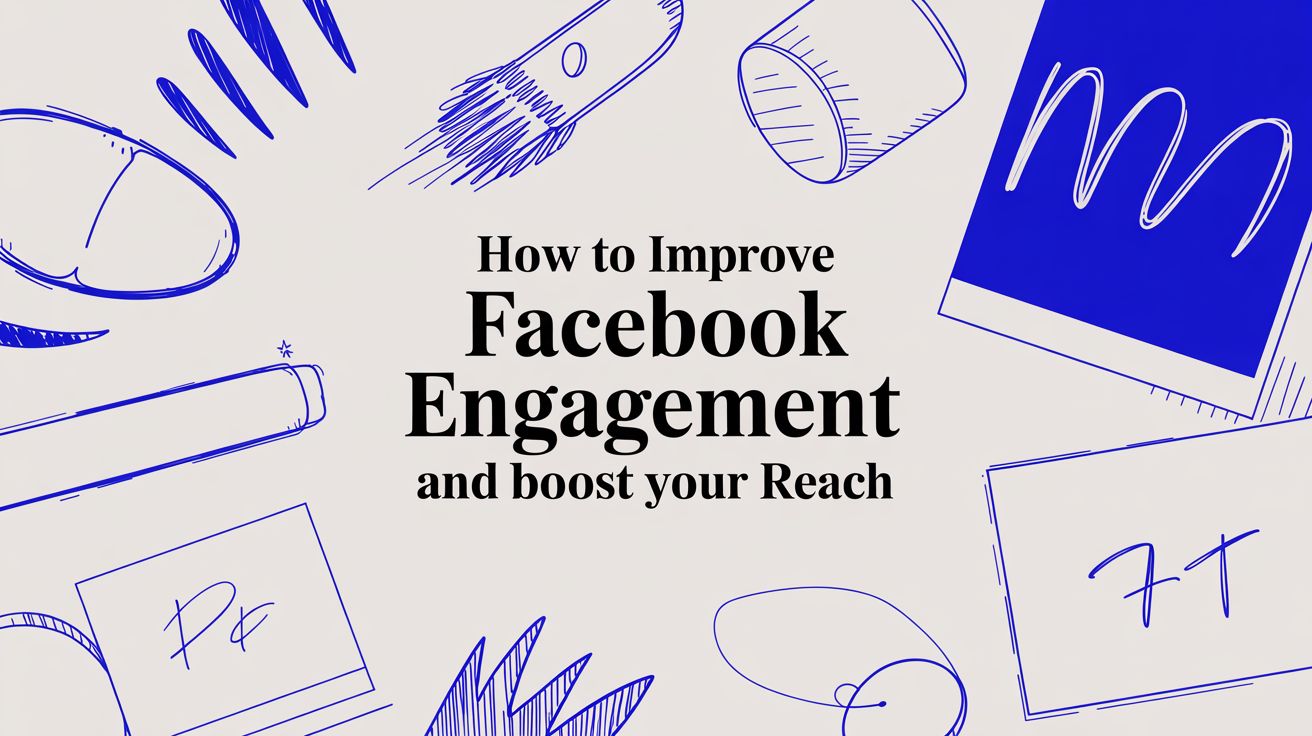How to Increase Event Attendance Proven Strategies
Learn how to increase event attendance with our guide. We cover proven marketing strategies, tech tools, and engagement tactics that boost registration.
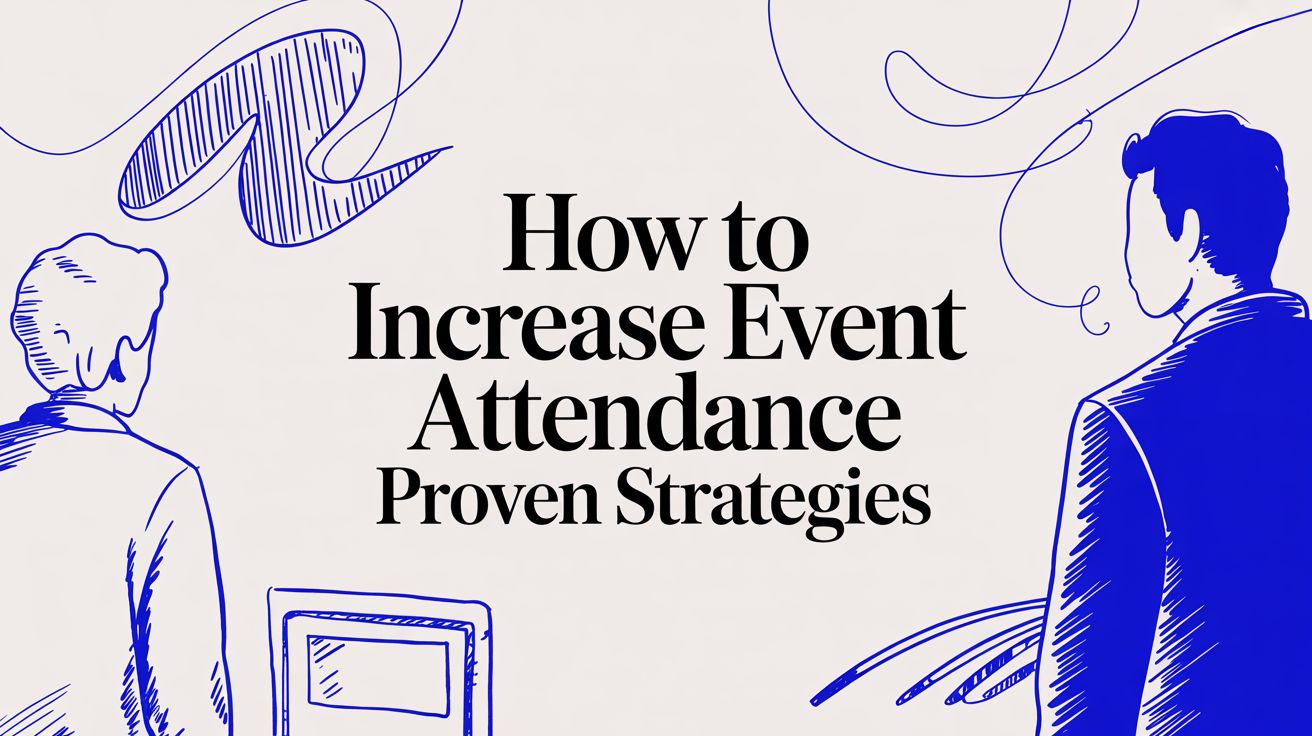
Before you even think about sending that first promotional email or scheduling a social media post, you need to lay the groundwork. Seriously. This is the stuff that makes or breaks an event. It's about getting crystal clear on who you're trying to attract, nailing down an offer they can't possibly ignore, and setting goals that actually mean something.
Get this part right, and every ounce of effort you put into promotion later will be ten times more effective.
Building Your Pre-Promotion Foundation
Too many organizers dive headfirst into marketing, throwing everything at the wall to see what sticks. Then they wonder why ticket sales are trickling in. The secret to a sold-out event isn’t just shouting louder; it’s building something so aligned with your audience that they feel it was made just for them.
This initial stage is where you shift your mindset from just "promoting an event" to "creating an unmissable experience." It’s the difference between yelling into the wind and having a real conversation with people who are already leaning in, waiting to hear what you have to say.
Define Your Ideal Attendee Persona
You can't sell tickets to "everyone." It just doesn't work. Vague targets like "marketers in New York" are a recipe for wasted ad spend. To really move the needle, you need to know exactly who you're talking to by creating a detailed attendee persona. Think of it as a character sketch of your perfect guest.
Give this person a name, a job, and a story. What are their biggest headaches at work? What skills are they desperate to learn?
- Demographics: Sure, get the basics down—age, location, job title. But don't stop there.
- Goals & Motivations: Why would they even consider your event? Are they hunting for networking connections, game-changing knowledge, or just a spark of inspiration?
- Pain Points: What problems keep them up at night? Frame your event as the solution they've been searching for.
- Communication Preferences: Where do they hang out online? Are they scrolling LinkedIn, debating on X (formerly Twitter), or deep in niche industry forums?
For example, forget "small business owners." Instead, picture "Startup Sarah," a 32-year-old SaaS founder who's completely stumped on lead generation. Suddenly, you know exactly what kind of content will grab her attention and where you need to be to find her.
Craft an Unbeatable Value Proposition
Once you know Sarah, you have to answer her one crucial question: "What's in it for me?" This is your event value proposition—a short, powerful statement that screams value. It needs to be so compelling that she immediately blocks off her calendar.
A killer value prop isn't about listing features like "great speakers." It's about promising a tangible result. Think "Learn the exact framework that doubled our agency's revenue" instead of "marketing workshops." Or "Connect with three potential co-founders in one afternoon" instead of "networking opportunities."
This statement is your north star. It should be plastered on your website, at the top of your emails, and all over your social media. It’s the core message that fuels every single piece of your marketing.
Set Smart Attendance Goals
Finally, you need a blueprint. Just saying "we want more attendees than last year" is a wish, not a plan. This is where you need to get specific with SMART goals (Specific, Measurable, Achievable, Relevant, Time-bound).
A real goal sounds like this: "Secure 300 paid registrations by May 15th, with at least 40% coming from early-bird sign-ups, to hit a 20% increase in attendance over last year."
Now that's a target. It gives your team a clear finish line, lets you track your progress, and tells you exactly when you need to switch up your strategy if you start to fall behind.
Executing an Organic Multi--Channel Promotion Plan
Alright, you've laid the groundwork for your event. Now for the fun part: getting the word out and building some serious buzz. This is where we shift from planning to promoting, and the goal is to create a groundswell of excitement without blowing a massive ad budget.
An organic, multi-channel approach isn't just about saving cash; it's about building real, authentic connections. You want to create a community around your event long before the doors even open. This is your chance to turn that event concept into a living, breathing story that people can follow across all your platforms.
The key is making sure that no matter where a potential attendee finds you, the message is consistent, compelling, and makes them think, "Wow, this event was made for me."
This whole process is guided by three core pillars: understanding your Persona, communicating your Value, and tracking your Goals.
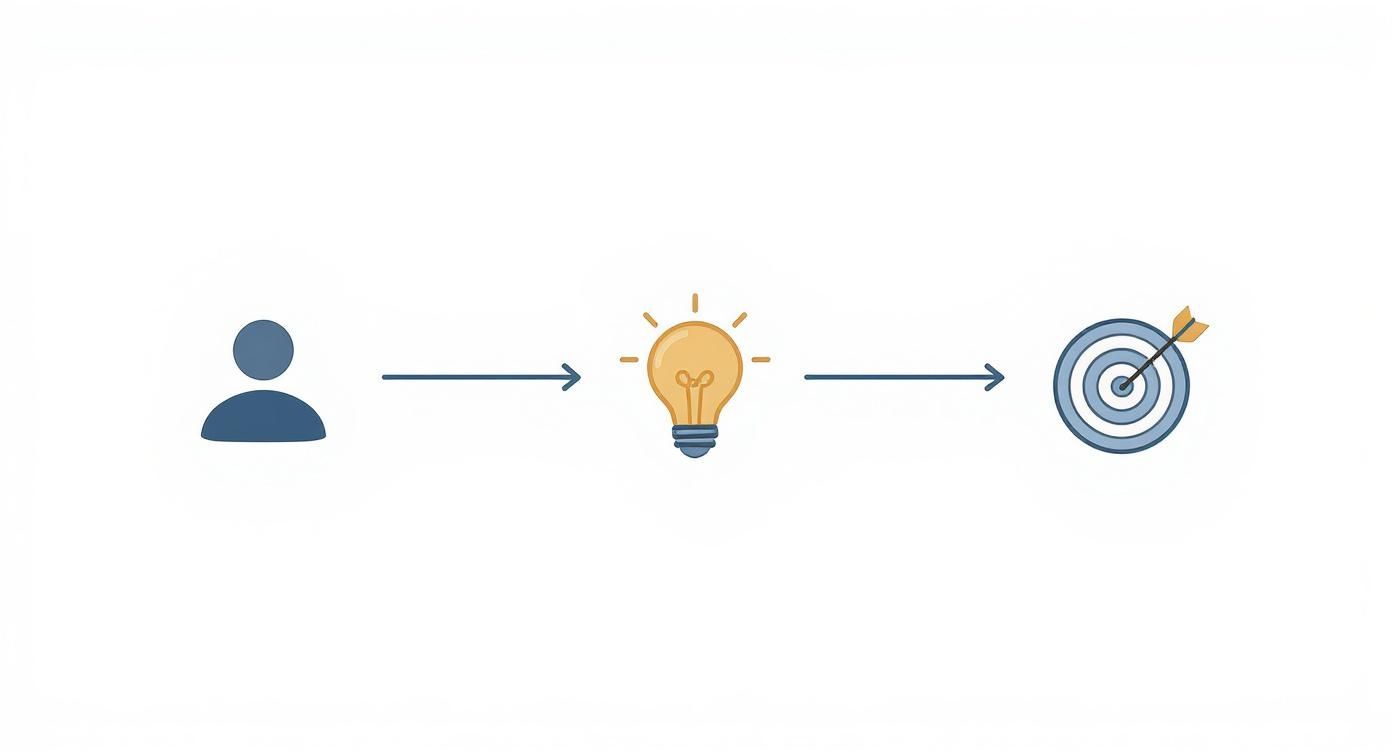
This visual is a great reminder that killer promotion always starts with a deep understanding of your attendee. Everything else flows from there.
Develop a Cohesive Content Calendar
Trying to "wing it" with your promotion is a surefire way to send mixed messages and miss huge opportunities. A content calendar is your strategic blueprint. It’s what ensures your promotional efforts are deliberate, consistent, and build momentum over time. Think of it as the narrative arc of your event's story.
First, map out your key milestones. This includes the big announcement, the early-bird deadline, speaker reveals, and that final push for registrations. Then, build content themes around each phase.
- Awareness Phase (8-12 weeks out): Start with the "why." Your content should speak directly to your attendee's pain points and introduce your event as the perfect solution.
- Consideration Phase (4-8 weeks out): Now, dive into the "what." This is where you pull back the curtain on speakers, session details, and cool networking opportunities.
- Decision Phase (1-4 weeks out): Time to create some urgency. Focus on scarcity (limited seats!), social proof (testimonials are gold), and upcoming deadlines.
By planning your content this way, you're not just shouting into the void. You're guiding potential attendees on a journey, building trust and excitement with every single post and email.
Activate Your Social Media Channels
Social media is your direct line to building a lively pre-event community. The secret is to stop cross-posting the same generic message everywhere. You need to tailor your content to the unique vibe of each platform. Go where your audience hangs out and speak their language.
A B2B tech conference, for example, will probably get the most traction on LinkedIn by sharing professional headshots and sharp insights from speakers. A creative festival, on the other hand, will kill it on Instagram using behind-the-scenes Stories and eye-catching Reels to capture the event's energy.
Pro Tip: Don't just broadcast; engage. Ask questions, run polls about session topics, and reply to every single comment. The more you interact, the more invested your audience will feel in your event's success.
Want to make your social posts more dynamic? Check out our guide on how to promote an event on Facebook with a countdown timer for some actionable tips on building visual anticipation.
Craft a High-Converting Email Nurture Sequence
Don't sleep on email. It's still one of the most powerful tools for driving registrations. While social media is great for creating buzz, email is where you have a direct, personal conversation with your most interested prospects. A well-designed nurture sequence can turn a mildly curious subscriber into a paid-up attendee.
The secret sauce here is segmentation. Seriously, don't send the same email to everyone. Group your list based on how they signed up or their past engagement. Someone who downloaded a speaker's whitepaper needs a different message than someone who just subscribed to your newsletter.
Sample Email Nurture Flow:
- Welcome & Value: The first email confirms their subscription and immediately gives them something useful, like a link to a popular blog post or a recording from a past event.
- Problem & Solution: The next message zeros in on the pain point your event solves and clearly positions your event as the ultimate solution.
- Social Proof & Speaker Spotlight: Build credibility by sharing a killer testimonial from a past attendee or a powerful quote from a keynote speaker.
- Urgency & Final Call: As a deadline approaches (like the end of early-bird pricing), send a clear, action-oriented email to drive immediate registrations.
Forge Strategic Partnerships for Amplified Reach
You don’t have to build your audience all by yourself. Strategic partnerships let you tap into existing communities that already trust the brands or influencers you team up with. This "borrowed trust" is incredibly powerful for boosting attendance.
Look for non-competing businesses, industry media, or influential speakers whose audiences perfectly match your ideal attendee. Then, reach out with a clear proposal that shows what's in it for both of you.
- Content Swaps: Offer to write a guest post for their blog if they'll contribute to yours.
- Co-Hosted Webinars: Host a joint webinar on a relevant topic. It's a fantastic way to get direct access to their audience.
- Affiliate Promotions: Give partners a unique discount code to share with their network and offer them a small commission on any tickets they help sell.
These partnerships can extend your reach far beyond your own channels, bringing in highly qualified and engaged people. And in today's world, that's more important than ever. The value of in-person events is soaring; a recent study found 78% of organizers see them as their most impactful marketing channel, and 57% have seen attendance increase over the past year.
Using Technology to Boost Event Registration
All the organic promotion in the world won't matter if your registration process is a clunker. Think about it: the tech you use is either a smooth on-ramp that welcomes attendees or a frustrating roadblock that sends them packing. A seamless, tech-driven process isn't just a nice-to-have; it's a core strategy for turning curious followers into registered attendees.
Your event's tech stack is the central nervous system for the whole operation. It manages everything from the first click on your sign-up page to the final thank-you email, and it directly shapes your ability to fill those seats.
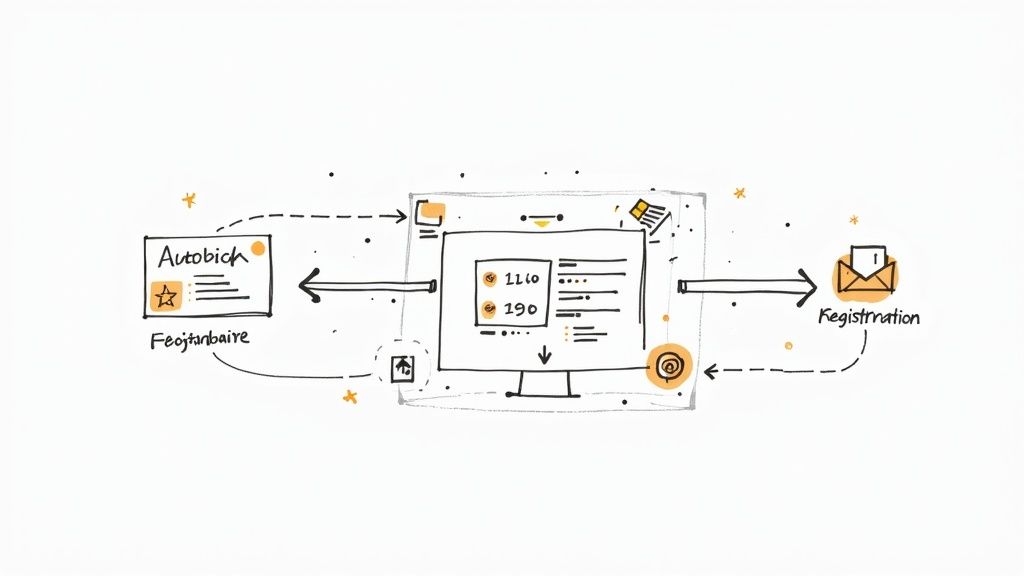
Embrace an Event Management System
An Event Management System (EMS) is your command center. It’s a specialized platform built to handle the entire event lifecycle, from selling tickets and communicating with attendees to crunching the data afterward. Trying to juggle sign-ups with spreadsheets and manual email lists is just asking for errors and missed opportunities.
An EMS automates all that tedious work, freeing you up to focus on what really matters: creating an incredible experience. The pros are already on board—research shows that 79% of event professionals use an EMS to make planning more efficient, a move that directly helps boost attendance. In fact, 52.1% of organizers credit user-friendly tech solutions for their increase in attendance.
A great EMS doesn't just collect names; it gathers valuable data. You can see where your registrations are coming from, track which promotional channels are most effective, and understand your audience on a deeper level.
Personalize the Journey with Automation
Modern event platforms are so much more than just a registration form. They let you automate and personalize the attendee journey, making potential guests feel seen and valued. That personal touch can be a powerful motivator.
Instead of blasting everyone with the same generic email, you can set up automated workflows that react to what people do.
- Targeted Reminders: Someone started registering but got distracted? An automated email can give them a gentle nudge to finish signing up.
- Personalized Content: Use registration survey questions to segment your audience by interest. Then, send them info about the specific speakers or sessions they'll actually care about.
- Intelligent Recommendations: If you run multiple events, an EMS can suggest future events based on someone's past attendance, keeping them engaged with your brand long-term.
This kind of personalization shows attendees you get them, which builds trust and makes them far more likely to commit.
Create Urgency with Countdown Timers
Let's be real: procrastination is the arch-nemesis of event registration. People mean to sign up, but they put it off... and sometimes forget completely until it’s too late. One of the best ways to fight this is by creating a clear sense of urgency.
Embedding a countdown timer on your event website and in your promotional emails is a simple but powerful psychological trigger. It’s a visual reminder that the window of opportunity is closing, whether it’s for an early-bird discount or the last day to grab tickets.
This visual cue pushes fence-sitters to make a decision. A live timer showing "Only 1 Day, 4 Hours, 22 Minutes Left!" is way more compelling than a static line of text. If you're ready to try it, check out our guide on how to add a countdown timer to a website to drive registrations.
Once they've signed up, you need to keep the experience smooth. The best event check-in apps can help manage arrivals and make a great first impression. After all, your tech should support the entire journey, from discovery to departure.
Designing an Experience That Creates Loyal Fans
Getting people to register is a huge win, but let’s be honest—it’s only half the battle. The real magic happens on-site. An unforgettable experience is what transforms a one-time attendee into a lifelong fan who comes back year after year and, even better, brings their network with them.
Your goal is to move beyond just delivering information and create a genuine journey for every person who walks through the door. When attendees feel valued, engaged, and connected, they become your most powerful marketing asset. This is where you build a loyal community that becomes the bedrock of your future growth.

Go Beyond Generic with Deep Personalization
In a world drowning in options, personalization is what makes an event feel essential. It’s the difference between an attendee feeling like one face in a crowd and feeling like the event was designed specifically for them.
Don't just take my word for it. Data shows that a whopping 96% of marketers report personalized experiences have led to increased sales. That's a principle that applies directly to events. This is why 44% of marketers have made customer experience a top priority; they know that a tailored journey is what gets people to show up and come back.
Personalization doesn't have to be complicated. Start with small, meaningful touches.
- Customized Agendas: Let attendees build their own schedules through your event app based on their interests or skill level. Simple, yet powerful.
- Targeted Networking: Use registration data to set up curated networking sessions. You could connect junior professionals with senior mentors or match founders with potential investors.
- Personalized Welcome Kits: A handwritten note or a small, relevant gift in their welcome bag based on their industry or role goes a long way.
These details show you've paid attention. Even the ticketing process can feel personal. Consider using a well-designed template for a ticket for an event that feels exclusive and professional, setting a positive tone from the very start.
Ditch the Lectures for Interactive Engagement
Let's face it: passive listening leads to wandering minds and endless phone scrolling. The most memorable events are the ones that get people out of their seats and actively involved. Shifting from one-way lectures to two-way participation is the secret to creating a dynamic atmosphere where people feel like contributors, not just spectators.
The key is to design sessions that encourage action, collaboration, and hands-on learning.
An interactive format respects the expertise in the room. Your attendees are professionals with valuable insights; giving them a platform to share and collaborate not only enhances their experience but enriches the event for everyone.
For example, instead of a standard Q&A at the end of a talk, try breaking the audience into small groups for a 10-minute brainstorming session on the topic. This simple shift fosters connection and much deeper learning. Beyond just the content, employing effective event delivery techniques is vital for ensuring your attendees stay plugged in and enthusiastic.
Experiential vs Traditional Event Formats
To really grasp how to elevate the experience, it helps to see the difference between a traditional approach and a modern, experiential one. Here’s a quick breakdown of how they stack up.
| Feature | Traditional Event Approach | Experiential Event Approach | | -------------------- | ---------------------------------- | ------------------------------------------ | | Content Delivery | Speaker-led lectures and panels | Hands-on workshops and live demonstrations | | Audience Role | Passive listeners | Active participants and collaborators | | Networking | Unstructured coffee breaks | Curated "brain dates" and topic tables | | Technology Use | Basic slide presentations | Live polling, gamification, and AR | | Post-Event Value | Access to slide decks | Session recordings and community forums |
This comparison makes it crystal clear: focusing on experiential elements directly boosts attendee value and makes your event the one people talk about for months.
By thoughtfully designing every touchpoint—from the first personalized email to the final interactive workshop—you’re doing more than just hosting an event. You're building an experience that resonates on a personal level. That’s the ultimate strategy for boosting attendance, as happy attendees become your most authentic and effective ambassadors, ensuring your next event is even more successful.
Turn This Event Into Your Next Event's Best Ad
The moment your event wraps up is the exact moment your marketing for the next one should kick off. All that energy and goodwill floating around is a powerful asset, but it has a seriously short shelf life. Your job is to bottle up that momentum and use it as the foundation for your next success.
Think of it this way: today’s attendees are tomorrow’s biggest advocates.
This post-event phase is where you really learn how to grow your attendance long-term. It's your chance to solidify relationships, get priceless feedback, and build a loyal community that’s already hyped for what's coming. A good follow-up strategy doesn’t just tie a bow on things; it kickstarts your next promotional cycle before the dust even settles.
Deliver Immediate Value and Say Thank You
Your very first message after the event shouldn't be an ask. It should be a gift. A generic "thanks for coming" email is a totally wasted opportunity. Instead, send a follow-up packed with real value that reminds everyone what a great experience they just had.
This is your chance to over-deliver and prove your event was worth every penny and every minute.
- Provide Session Recordings: Give attendees access to video or audio recordings of the sessions. This is huge for people who couldn't be in two places at once.
- Share Speaker Decks: Put together all the slide decks from your speakers. It's an incredibly useful resource that people will actually save and refer back to.
- Create a Highlight Reel: A short, high-energy video capturing the best moments is perfect for reigniting that buzz and is super shareable on social media.
This simple act of giving first builds a ton of goodwill and keeps the conversation alive.
Gather Actionable Feedback to Improve
While the experience is still fresh in everyone's minds, it’s the perfect time to ask for feedback. But please, don't just send out a long, boring survey. To get responses that are actually useful, make your request quick, targeted, and focused on making things better.
I've found that a mix of rating scales and a few open-ended questions works best. Ask specific things like, "Which session gave you the most actionable advice?" or "What's one thing we could do to make the networking even better next year?" This gives you concrete data to work with, not just vague compliments.
This feedback is pure gold. It tells you exactly what landed with your audience and where you have clear opportunities to make your next event completely unmissable. Analyzing this data isn't just a good idea—it's a non-negotiable step for growth.
Nurture Your New Community
Look around. You just gathered a room full of people who share the same interests. Don't just let that energy fizzle out. Your final move is to give them a place to continue the conversations and connections they started at your event.
- Create an Exclusive Group: Start a private LinkedIn or Facebook group just for attendees. This can become a year-round hub for networking and sharing ideas.
- Showcase User-Generated Content: Reshare photos, posts, and testimonials from your attendees on your main social channels (always ask for permission, of course!). This is powerful social proof.
- Offer an Exclusive Early-Bird Deal: Reward their loyalty. Give past attendees the first crack at tickets for the next event at a special "alumni" price.
When you turn one event into the best ad for the next one, you create a self-sustaining cycle of excitement and loyalty. Attendees who feel valued long after the lights go down are the ones who will be hammering the "register" button next time—and bringing their friends with them.
Got Questions About Boosting Event Attendance?
Even with the best-laid plans, a few questions always pop up when you're deep in the trenches of event promotion. It happens to everyone. Let's tackle some of the most common hurdles organizers face and get you back on track.
How Far in Advance Should I Start Promoting My Event?
This is the classic "how long is a piece of string?" question, but there are some solid benchmarks. For a larger conference or festival, you'll want to give yourself a runway of 8-12 weeks. This isn't just about shouting from the rooftops; it's about building a narrative, warming up your email list, and creating genuine buzz before you even mention a "buy now" button.
If you're running a smaller workshop or a local meetup, a 4-6 week window is usually the sweet spot. You want to hit that perfect timing—not so early that people mark their calendars and then completely forget, but not so late that their schedules are already packed.
Think of your promotional timeline as telling a story. It needs a beginning (the initial announcement), a middle (building value and excitement), and an end (the final push for registrations).
Paid Ads or Organic Promotion: What's More Important?
Honestly, picking one over the other is like trying to clap with one hand. They’re designed to work together.
Organic promotion—your social media posts, blog content, and email newsletters—is how you build a real community. It's the bedrock of trust and creates a following that actually wants to hear from you. This is your long game.
Paid advertising is the megaphone. It lets you take your proven organic content and blast it out to highly specific audiences who haven't found you yet. Think of it as fuel for the fire you’ve already started.
- Start with organic: Nail down your message and build an engaged base.
- Amplify with paid: Push your best-performing content to a wider, qualified audience.
My Ticket Sales Have Stalled. What Can I Do?
First off, don't panic. A mid-campaign slump is completely normal. I've seen it happen with dozens of events. The key is to diagnose the problem before you start throwing random solutions at it.
Take a deep breath and look at your data. Where's the bottleneck? Are people not clicking your ads? Are they dropping off on the registration page? Low email open rates? Once you pinpoint the issue, you can get strategic.
A quick jolt of energy often does the trick. Try launching a 24-hour flash sale to create some serious urgency. You could also reveal a surprise guest speaker or drop a new, can't-miss agenda item. Sometimes, all it takes is a simple re-engagement email with a behind-the-scenes video or a powerful attendee testimonial to reignite that initial spark.
Ready to create that crucial sense of urgency and drive registrations? The Countdown Timer App makes it easy to add a live, auto-updating timer to your website and Facebook page. It’s a simple, powerful tool to turn fence-sitters into attendees. Start for free and watch your sign-ups grow.

